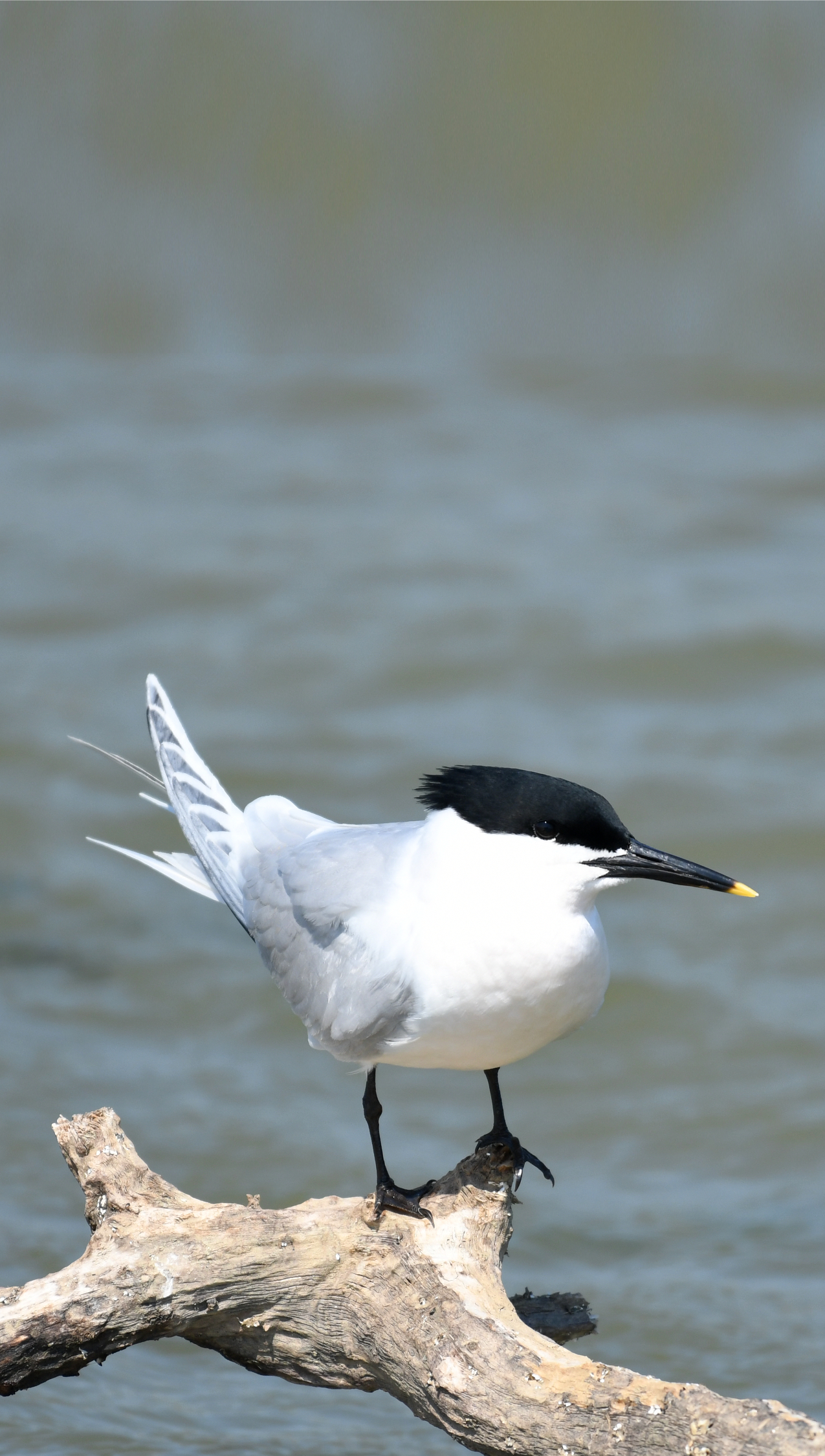
The Sandwich Tern is the largest Tern that breeds in Britain. It’s named not because it enjoys nicking your butties, but because it nested in Sandwich Bay and was first identified by the ornithologist John Latham in 1787. Ironically, your butty's name is also derived from the bay via the Earl of Sandwich, who first had the idea of putting something tasty between two slices of bread. Sandwich in Anglo-Saxon means 'town on sandy ground' and is nothing to do with food at all.
The Sandwich Tern is a heavy-looking bird. It is a very white Tern with a white front, very pale grey back, shaggy black cap, untidy chest, and short black legs. The bill is black with a yellow tip. It is stiff and less buoyant in flight, often flying higher than other Terns. Their call is a harsh grating "keer-ick".

It seldom hovers and plunge dives with quite a large splash, staying longer underwater than other Terns when catching fish like sprats, whiting and sand eels. Fish is their favourite food and they can range as far as 20km from their colonies to find a suitable snack.
Sandwich Tern breeding starts at the end of April. They nest in large noisy colonies on sandy seashores. The 1-2 eggs are laid in a shallow scrape on the ground. Both parents incubate the eggs which hatch after 21 days. While adults are away fishing, the youngsters often gather in creches which helps protect them. How parents identify their own young in such a large group of chicks, when they get back, is a mystery. The youngsters can fly 28 days later, but depend on mum and dad for a further 4 months. Unlike some of the smaller Terns, the Sandwich Tern is not very aggressive toward potential predators. They rely on the sheer density of their nests, often only 20--30 cm apart, and they nest close to other more aggressive species like Arctic Terns and Black-headed Gulls which keep them safe. After nesting, the Sandwich Terns quickly disperse and by October most have gone, migrating along the coasts to Southern Europe or Africa.
With the increased disturbance of nest sites, by more people having holidays by the sea, many of the important colonies survive only because they are now protected on nature reserves. There are 12,000 breeding pairs of Sandwich Terns in Britain and the oldest ringed Sandwich Tern lived to be 30 years old!
Their Latin name is 'sterna sandvicensis' where 'sandvicensis', like the English name, refers to Sandwich Bay in Kent and 'sterna' is derived from 'stearn', an old English name for a Tern. Interestingly, the Sandwich Tern is one of three birds to be named after Kent - the others being the Kentish Plover and the Dartford Warbler.